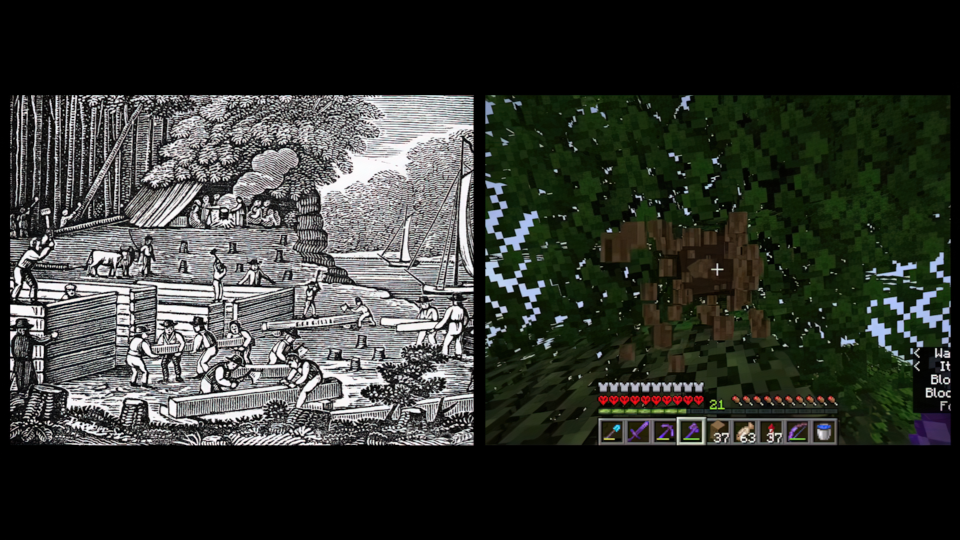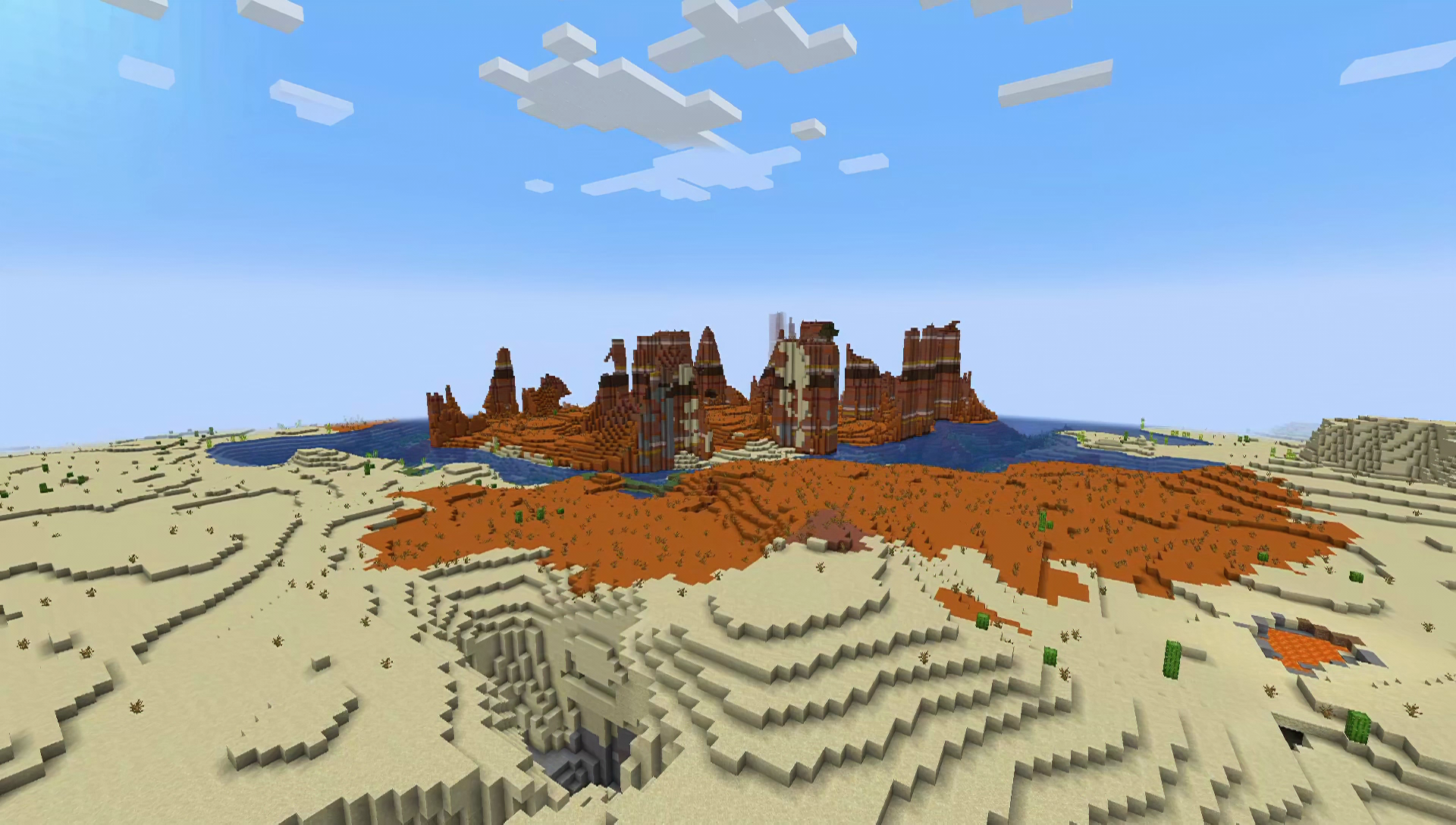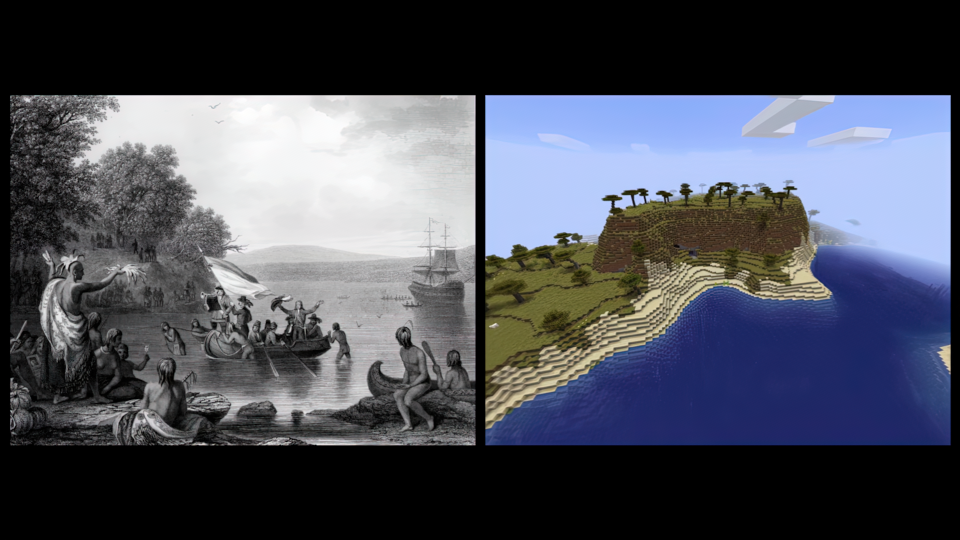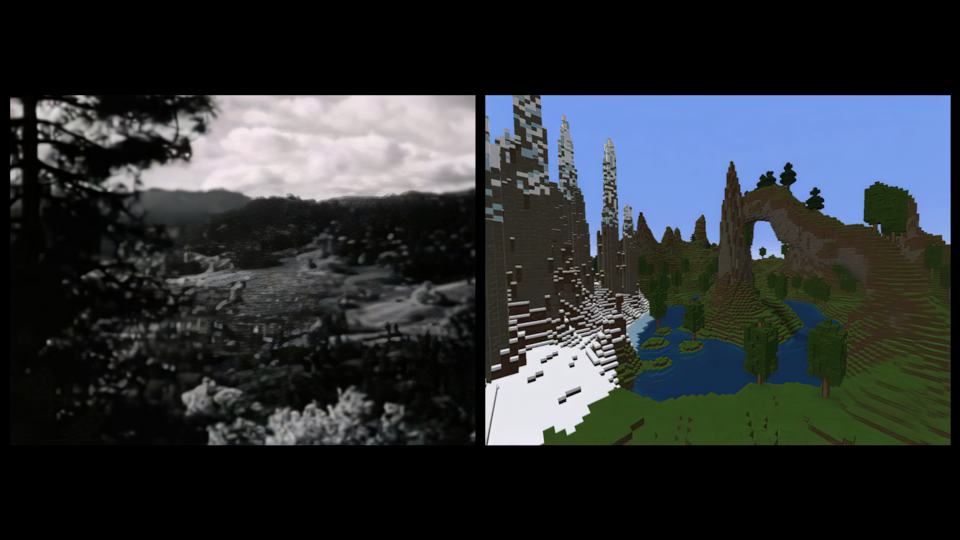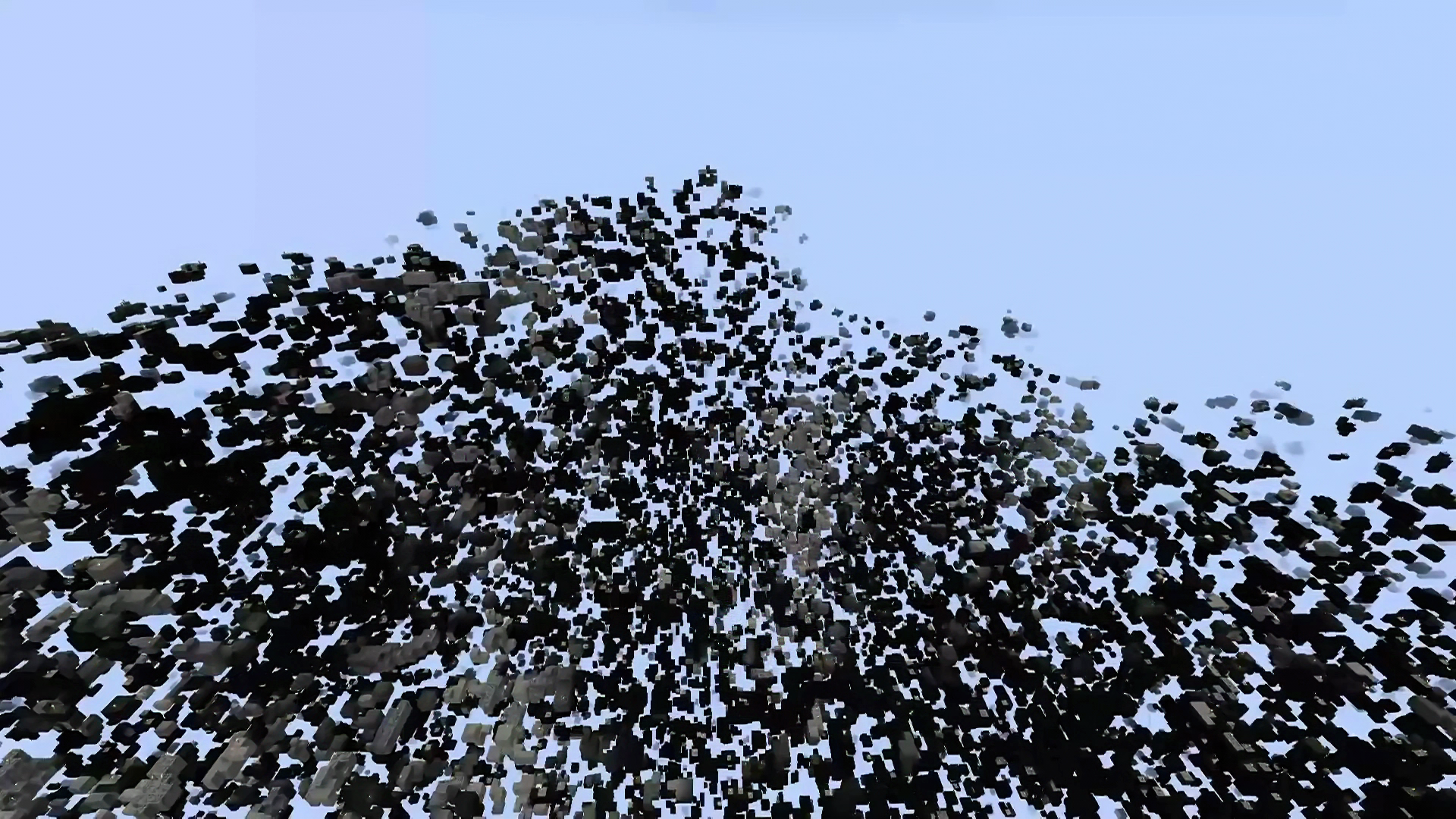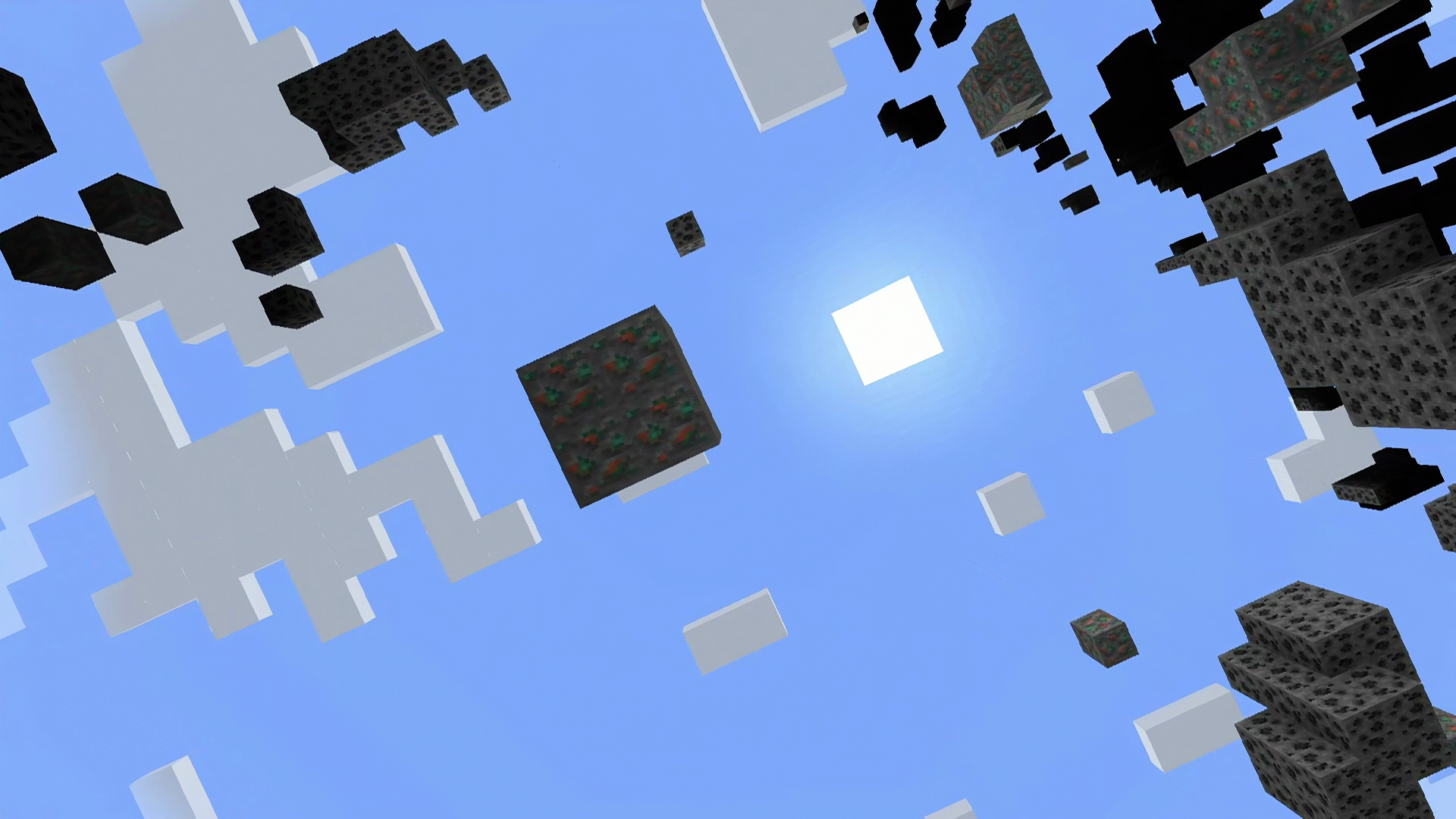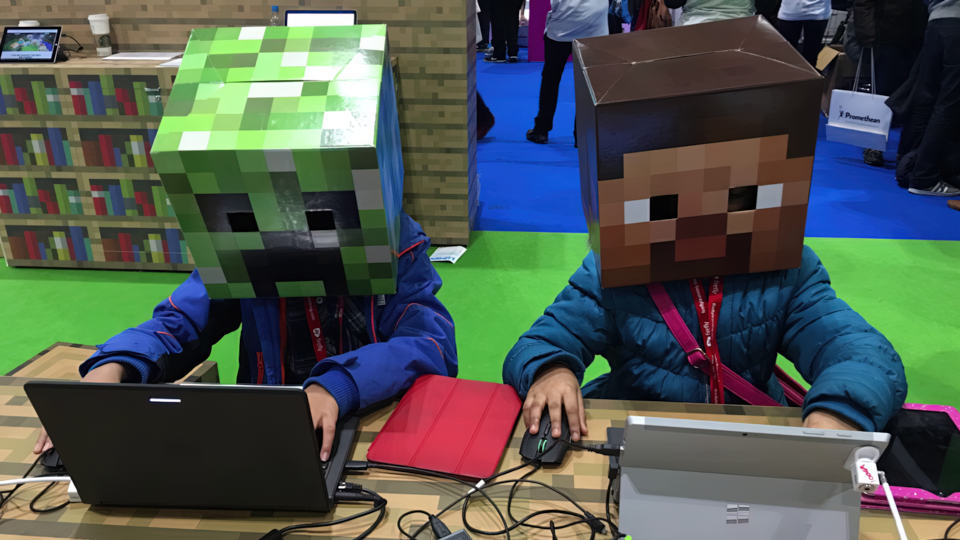VRAL is currently showcasing Chris Kerich’s latest project Three Impossible Worlds. To accompany the exhibition, we are discussing several artworks that comprise his oeuvre. Today, we delve deeper into his Minecraft video essay, with a comparative approach.
PATREON-EXCLUSIVE CONTENT
〰️
PATREON-EXCLUSIVE CONTENT 〰️
The specific nature of Chris Kerich’s Three Impossible Worlds becomes clearer when contrasted with Sjors Rigters’s The Virtual Frontier. Both artworks employ Minecraft to unpack the ideological biases and constraints subtly encoded within the game’s mechanics and procedural systems. Yet despite this shared intent, the two projects mount their critiques through notably distinct creative strategies.
Fundamentally, Kerich and Rigters have a common ambition: to expose and defamiliarize the colonialist, hyper-capitalist ideology that Minecraft insidiously promotes through its gameplay loops of endless accumulation, extraction and technological expansion. The artists are united in interrogating how this blockbuster video game normalizes ecologically reckless values of infinite growth and resource exploitation.
However, Kerich and Rigters diverge in their means of critiquing Minecraft’s embedded ideology. Whereas Rigters adopts a direct, expository approach in his video essay format, Kerich opts for a more oblique and interpretively open-ended tactic with his interactive impossible worlds. This contrast illuminates two viable artistic avenues for laying bare the concealed politics suffusing mainstream games...
Matteo Bittanti
Works cited
Chris Kerich
Three Impossible Worlds, digital video, color, sound, 11’ 14”, 2022, United States
Sjors Righters
The Virtual Frontier, digital video, color, sound, 3’, 2020, The Netherlands
All images courtesy of the Artists
This is a Patreon exclusive content. For full access consider joining our growing community.

